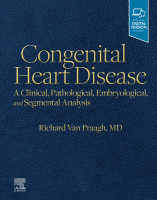Physical Address
304 North Cardinal St.
Dorchester Center, MA 02124

1961 1. Van Praagh R. Causes of death in infants with hemolytic disease of the newborn (erythroblastosis fetalis). Pediatrics. 1961;28:223-233. 2. Van Praagh R. Diagnosis of kernicterus in the neonatal period. Pediatrics. 1961;28:870-876. 3. Van Praagh R, Ongley PA, Swan…

You’re Reading a Preview Become a Clinical Tree membership for Full access and enjoy Unlimited articles Become membership If you are a member. Log in here

Equations, Apoptosis, Switches, Rotations, and Synergy Basic Principles 1. When the situs (pattern of anatomic organization) of the subarterial infundibulum and the situs of the great arteries are the same (concordant), the great arteries are normally related—solitus normally related, or…

The new information, also presented in Chapter 15, Chapter 26, Chapter 27 , raises questions about how best to name and define various types of congenital heart disease. Consider, for example, transposition of the great arteries (TGA). At the present…

What are the Heterotaxy Syndromes? Heterotaxy is derived from two Greek words: heteros, “other,” and taxis, “arrangement.” Hence, heterotaxy is an arrangement of the viscera that is other than normal (situs solitus) or its mirror image (situs inversus). Although there…

The Sinoatrial Node The sinoatrial node (SAN) is the pacemaker of the human heart ( Fig. 28.1 ). In visceroatrial situs solitus, the normal pattern of anatomic organization of the viscera and atria, the SAN normally is located to the…

There is so much that is new in Chapter 22, Chapter 23, Chapter 24, Chapter 25, Chapter 26 , it may be helpful to summarize and to integrate this new understanding. The abbreviations, references, and implicit figures in this summary…

Basic Principles 1. When the situs (or pattern of anatomic organization) of the subarterial infundibulum and the situs of the great arteries are the same (concordant), the great arteries are normally related. 2. When the situs of the subarterial infundibulum…

Anatomically corrected malposition of the great arteries is defined as malposition of the great arteries in which both great arteries nevertheless arise above the morphologically appropriate ventricles, aorta above the morphologically left ventricle (LV), and pulmonary artery above the morphologically…

Most pediatric cardiologists and congenital heart surgeons have never seen a patient with double-outlet left ventricle (DOLV). It is that rare. How rare is that? Well, in our cardiac pathology database on which this book is based (n = 3216…